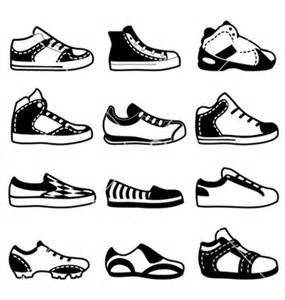The Workout Shoe For You
Don’t you love the amazing feeling you get after completing a killer workout? But wait; why do your feet and calves hurt? If you know you’re using correct form with your movements, you may not be wearing the correct TYPE of shoe for your workout. When I first became a fitness instructor I encountered this problem; I was constantly in pain due to shin-splines until I discovered I was using an everyday tennis shoe for cross training workouts. Boy, did my world change! The correct type of shoe for your workout will enable you to perform comfortably, and with safe form. If you are experiencing something similar to me, or you are curious to what type of shoe would optimize your workout, I have the guide for you.
Shoes for Every Occasion
Walking:
Characteristics: (Defined by Stephanie Lee’s Article, How to Pick the Right Shoe For Any Workout. Cited Below)
- Comfort
- Higher Heal for cushion
Running:
Characteristics: (Defined by Stephanie Lee’s Article, How to Pick the Right Shoe For Any Workout. Cited Below.)
- Light Weight
- Arch Support
- Lower heal promotes forefoot landing
- Higher heal cushions to repeated footfalls
According to Catherine Cheung, a foot surgeon, “Runners land more on their forefoot, while walkers have a heavier heel strike. So for running, you want a shoe that has more cushioning on the forefoot, while walking shoes should have stiffer rubber to support the heel.”
Recommended in an article call, How to Pick the Right Shoe For Any Workout, if you are planning to do more trailing walking/running it may be beneficial to find a shoe with a slightly thicker sole to prevent any ground debris from harming your feet. However, road running shoes will work just fine; they are just less protected from punctures.
Weight Lifting:
Characteristics: (Defined by Stephanie Lee’s Article, How to Pick the Right Shoe For Any Workout. Cited Below.)
- Stability in your ankles but also for flexible movements
- Flat and Stiff Soles
- Raised Heel
The strong support and stiff foundation allows for powerful movements keeping your weight evenly disturbed.
Aerobic:
Characteristics: (Defined by American Academy of Orthopedic Surgeons)
- Lightweight
- More Cushion
- Thicker Support beneath Ball of Foot
Depending on the type of foot you are working out on, more cushion is needed on hard surfaces, and less cushion needed for padded surfaces.
Cross Trainers:
Characteristics: (Defined by Kathleen Stone, past president of the American Podiatric Medical Association (APMA). – an article by WebMD)
- A Firm Heel
- Good Support (The shoe can not bend easily)
- Light Weight
Cross Trainer shoes are made for multiple purposes. They include the flexibility of a running shoe, but the lateral support of a tennis shoe. However, they are not meant for heavy use in once disciple, they are made to withstand a variety of workouts casually.
Indoor Cycling Shoes:
Characteristics: (Defined by Stephanie Lee’s Article, How to Pick the Right Shoe For Any Workout. Cited Below)
- Light Weight
- Aerodynamic
- Stiff
- Tight Fit
- Most of the Time Used: SPD- type 2- Bolt Cleat
***Group Fitness Cycling Bikes Compatible.
Helpful Resources
-If you tend to notice your shoes wear more quickly in a certain area, check out Real Simple’s article on what characteristics to look for to help counter early wear and tear.
-If you found the type of shoe you want but need help choosing the fit for you, go to Kathleen Stone’s article.
The next time you are thinking about what athletic shoe to buy, consider what workouts you do the most. Then, search out for the shoe that provides all the characteristics you need. Thank you for your time!
Until Next Time… Carry on.
-Kari Rebman